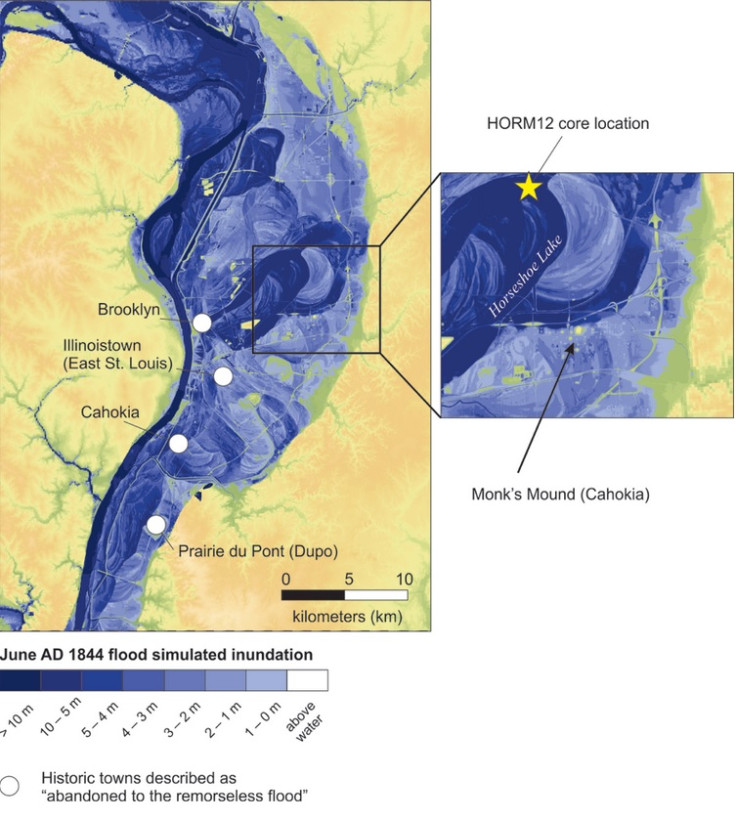Mississippi megafloods wiped out biggest ancient Native American civilisation of Cahokia

Megafloods likely wiped out the largest and most influential prehistoric Native American civilisations, scientists have said.
Cahokia was the biggest and most prominent cultural centre north of Mexico between around 1000 and 1200, having emerged around 600 AD. It had economic power and influence over a huge area, from the Great Lakes to the Gulf of Mexico.
However, the city suddenly declined and by 1400, the city that spanned over six square miles had been completely abandoned. Scientists from the University of Wisconsin-Madison now say they know why.
Publishing their findings in the Proceedings for the National Academy of Sciences, scientist say major flood events in the Mississippi River are tied to both the culture's rise and fall.
The authors looked at sediment cores from two lakes in the Mississippi floodplain dating back almost 2,000 years. Analysis showed at least eight major flood events in the central Mississippi River valley.
Researchers used radiocarbon dating of plant remains and charcoal within the core to make a timeline of events at the river. They then collected sediments from an area 120 miles downstream from the ancient city and found the same flood signatures.
Before 600 AD and after 1200, the sediment cores showed there were frequent flood events. Cahokia rose to prominence during a relatively arid period and was able to flourish for years before a major flood came along and wiped it out.

The floods, coupled with political instability, population decline and drought, could have been the final nail in the coffin for Cahokia.
Sissel Schroeder, a professor of anthropology accompanied the researchers to help provide historical and archaeological context for the findings. She said the flooding from 1200 could coincide with shifts in the archaeological record.
"We see some important changes in the archaeology of the site at this time, including a wooden wall that is built around the central precinct of Cahokia," she said. "There are shifts in craft production, house size and shape, and other signals in material production that indicate political, social and economic changes that may be associated with social unrest."
The river would have had to rise about 10m (33ft) above its base elevation to deposit sediments where there researchers were looking. This sort of flooding would have devastated the regions crops, creating huge agricultural shortfalls. "It would have had a particularly destabilising effect after hundreds of years without large floods," Schroeder says.
Study author Samuel Munoz said: "Rarely do you get such fortuitous opportunities where you have these nice sedimentary records next to an archaeological site that's so well studied."
"We hope archaeologists can start integrating these flood records into their ideas of what happened at Cahokia and check for evidence of flooding."
© Copyright IBTimes 2025. All rights reserved.






















